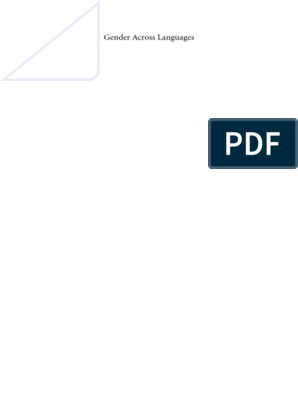Sexist language
is language that excludes either men or women when discussing a topic that is
applicable to both sexes.
Sexist language includes using the word man to refer to humanity, and using titles
like Congressman and fireman. Another common error that shows gender bias is assuming that the
subject of all sentences is male. For instance, the statement, "Each student chose his own topic for his
term paper," leads the reader to assume that all the students in the class were male, despite the
probability that half of them were female.
Sexism is prejudice or discrimination based on a person's sex or gender. Sexism can affect anyone, but it
primarily affects women and girls. It has been linked to stereotypes and gender roles, and may include
the belief that one sex or gender is intrinsically superior to another.
A look at linguistic sexism is finding out the relationship between language and gender. A lot of people
run into the difficulty of making the choices between certain words in their everyday discourses. They
wonder which to choose – the chairman has arrived for the meeting or the chairperson has arrived for
the occasion when referring to a woman. This is the stuff the English language is made of. It is ridden
with linguistic sexism that excludes women and trivializes what women do. This paper examines
elements of sexism in the English language which abound in the morphology, syntax and semantics of
the language. Some solutions were also proffered.
Language is one of the most powerful means through which sexism and gender discrimination are
perpetrated and reproduced. The content of gender stereotypes, according to which women should
display communal/warmth traits and men should display agentic/competence traits, is reflected in the
lexical choices of everyday communication. As a consequence, language subtly reproduces the societal
asymmetries of status and power in favor of men, which are attached to the corresponding social roles.
Moreover, the hidden yet consensual norm according to which the prototypical human being is male is
embedded in the structure of many languages. Grammatical and syntactical rules are built in a way that
feminine terms usually derive from the corresponding masculine form. Similarly, masculine nouns and
pronouns are often used with a generic function to refer to both men and women. However, such
linguistic forms have the negative effects of making women disappear in mental representations.
Although the use of gender-fair linguistic expressions can effectively prevent these negative
consequences and promote gender equality, there are even more implicit forms of gender bias in
language that are difficult to suppress. By choosing terms at different levels of abstraction, people can
affect the attributions of the receiver in a way that is consistent with their stereotypical beliefs.
Linguistic abstraction, thus, is a very subtle resource used to represent women in a less favorable way
and thus to enact gender discrimination without meaning to discriminate or even be aware that this
linguistic behavior has discriminatory results. In order to reduce gender bias, it is necessary to change
people’s linguistic habits by making them aware of the beneficial effects of gender-fair expressions.
Verbal communication is one of the most powerful means through which sexism and gender
discrimination are perpetrated and reproduced. Why is that so? The answer is twofold. First, the content
of gender stereotypes, according to which women should display communal/warmth traits (e.g., being
nice, caring, and generous), and men should display agentic/competence traits (e.g., being efficient,
agentic, and assertive; Cuddy, Fiske, & Glick, 2004; Eagly, Wood, & Diekman, 2000), are reproduced in
�the lexical choices of everyday communication (Maass & Arcuri, 1996). However, the content of gender
stereotypes is not neutral, as it reflects the asymmetries of status and power in favor of men, which are
attached to the corresponding social roles (Eagly et al., 2000). In turn, these asymmetries are subtly
expressed in the words used to refer to men and women, with men being described with more agentic-
related words and women described with more communal-related words (e.g., Gaucher, Friesen, &
Kay, 2011; Madera, Hebl, & Martin, 2009; Moscatelli, Ellemers, Menegatti, & Rubini, 2016). Given that
language not only reflects stereotypical beliefs but also affects recipients’ cognition and behavior, the
use of expressions consistent with gender stereotypes contributes to transmit and reinforce such belief
system and can produce actual discrimination against women.
Second, the hidden yet consensual norm according to which the prototypical human being is male is
reproduced in the structure of many languages (Silveira, 1980). To understand how the sex is embedded
in the grammatical and syntactical rules of different languages, and therefore the extent to which a
language contributes to perpetrate gender bias, Stahlberg, Braun, Irmen, and Sczesny (2007) proposed a
distinction between three language types: genderless languages, natural gender languages, and
grammatical gender languages. All of them have lexical expressions of sex in words of the type
“women,” “sister,” “father,” or “man.” However, this is the only sex-marking for genderless languages
(e.g., Finnish, Turkish), that have neither grammatical gender for nouns nor for personal pronouns. In
natural gender languages (e.g., English, Scandinavian languages) there is not grammatical marking of
sex, such that most nouns and their dependent linguistic forms (articles, adjectives, pronouns) can be
used to refer to both males and females, and personal pronouns are the major resource for expressing
gender. In grammatical gender languages (e.g., French, Italian, German) all nouns are assigned feminine
or masculine (or neutral) gender, and the dependent parts of speech carry grammatical agreement to
the gender of the corresponding noun. For instance, the sea is masculine in Italian, il mare, and feminine
in French, la mer. Moreover, in these languages, grammatical and syntactical rules are built in a way that
feminine nouns or adjectives are often marked as they derive from the corresponding masculine form.
Similarly, masculine nouns and pronouns are often used with a generic function, that is, to refer to both
men and women.









































































































